Hop Bush: The Alternative to Oleanders
No matter where you live, you will see the same shrubs being used over and over again in countless landscapes. While the shrubs may be attractive, their overuse throughout neighborhoods creates a boring appearance because they are so common.
The Allure and Overuse of Oleanders
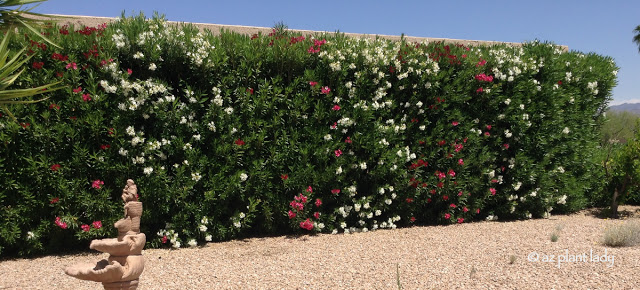
In California, Nevada, and Arizona, oleanders have held a prominent spot in the landscape for years. Their popularity is due to their lush evergreen foliage, ability to withstand intense heat, and their pretty flowers.
However, their overuse in many areas makes their beauty less impactful and frankly, almost forgettable.
The Power of Unpredictability
At a recent conference, this point was put quite succinctly by the head of horticulture for Disneyland who said,
“When things are expected (in the landscape), they become less powerful and impactful”.
His statement sums up what happens when we use the same plants over and over.
Oleanders’ Ailment: Oleander Leaf Scorch
In the case of oleanders, there is another problem.
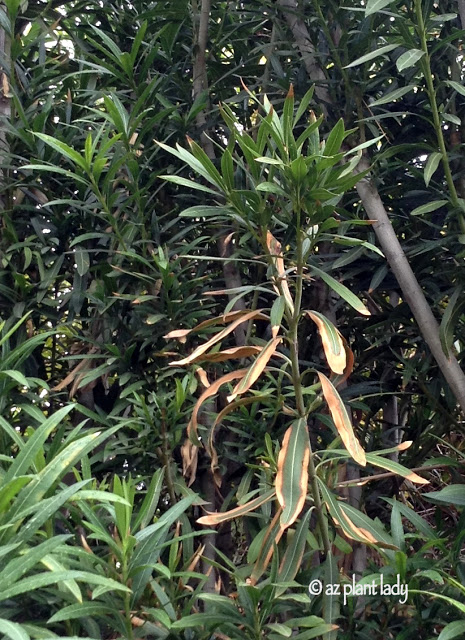
Oleanders are susceptible to a fatal disease called, oleander leaf scorch. This disease has come from California into Arizona where it is popping up in neighborhoods in Phoenix and also Lake Havasu. I have consulted with several cases affecting large, mature oleanders in Arcadia, Biltmore, and Moon Valley areas in Phoenix.
This bacterial disease is spread by leaf-hopper insects and there is currently no known cure or control available. Infected oleanders slowly decline over 2-3 years before dying. To date, dwarf oleanders have not shown signs of the disease, only the larger forms. But, that could change sometime in the future.
Seeking a Shrub Alternative: Introducing Hop Bush
Objectively, there’s a lot to like about oleanders; they thrive in hot, dry climates with minimal fuss, have attractive dark green foliage, and add color to the landscape when in flower. However, their overuse in the landscape makes them less impactful and coupled with their susceptibility to oleander leaf scorch, people want an alternative.
You can learn more about this disease that affects oleanders here.
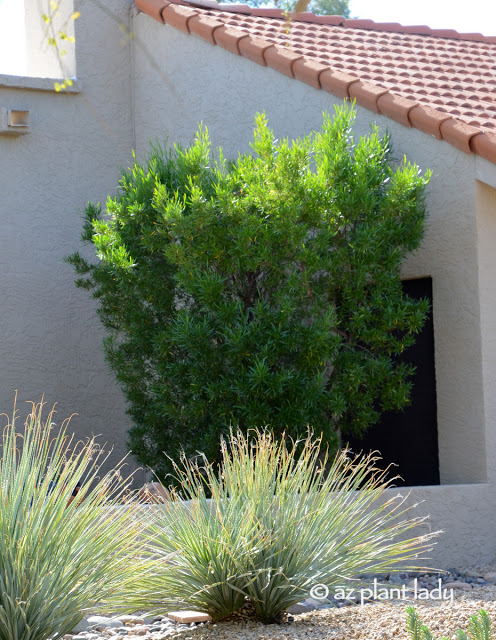
When asked for another option for the large, tall forms of oleanders, I recommend Hop Bush (Dodonaea viscosa), also known as Hopseed Bush.

Hop Bush is a Versatile Landscaping Solution
This native desert shrub has attractive, evergreen foliage and a similar growth habit to oleander. They grow up to 12 feet tall or prune to a shorter height.
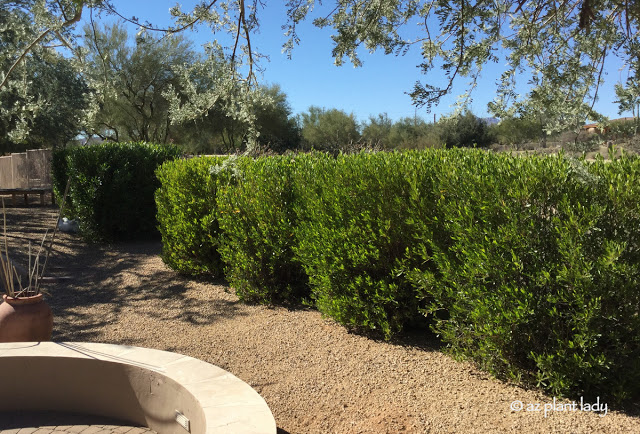
Use Hop Bush in the same ways as oleanders to provide a nice green hedge or privacy screen.
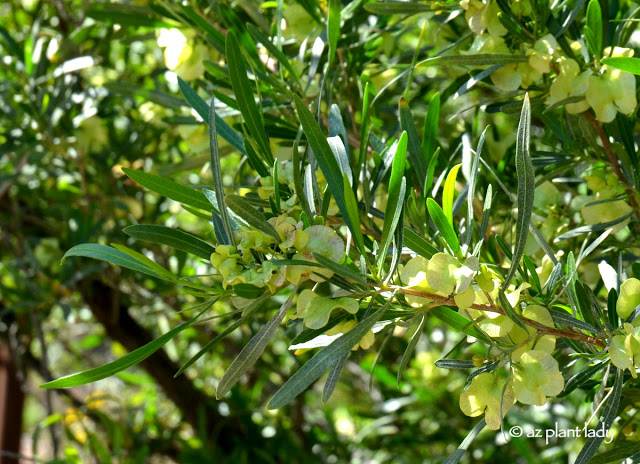
Hop bush flower
Hop Bush has Elegance in Foliage
While they don’t have colorful flowers; they have lovely foliage that is only mildly poisonous as opposed to oleanders which are highly toxic. Hop bush has a lovely natural shape or prune as a formal hedge.
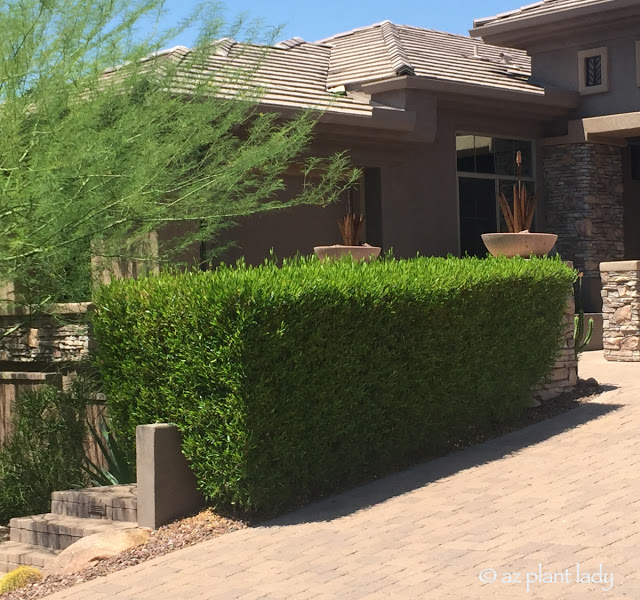
Have you ever seen hop bush growing in the landscape? Your insights and experiences are invaluable – feel free to share them in the comments below.

 Noelle Johnson, aka, 'AZ Plant Lady' is a author, horticulturist, and landscape consultant who helps people learn how to create, grow, and maintain beautiful desert gardens that thrive in a hot, dry climate. She does this through her consulting services, her online class Desert Gardening 101, and her monthly membership club, Through the Garden Gate. As she likes to tell desert-dwellers, "Gardening in the desert isn't hard, but it is different."
Noelle Johnson, aka, 'AZ Plant Lady' is a author, horticulturist, and landscape consultant who helps people learn how to create, grow, and maintain beautiful desert gardens that thrive in a hot, dry climate. She does this through her consulting services, her online class Desert Gardening 101, and her monthly membership club, Through the Garden Gate. As she likes to tell desert-dwellers, "Gardening in the desert isn't hard, but it is different."
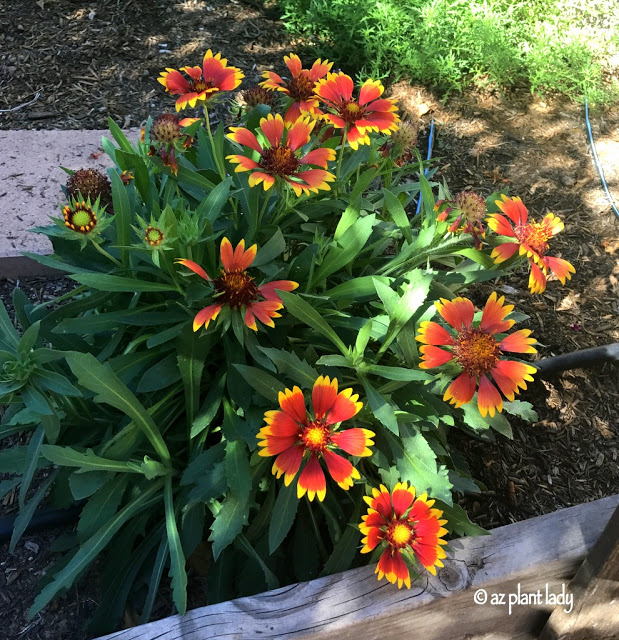
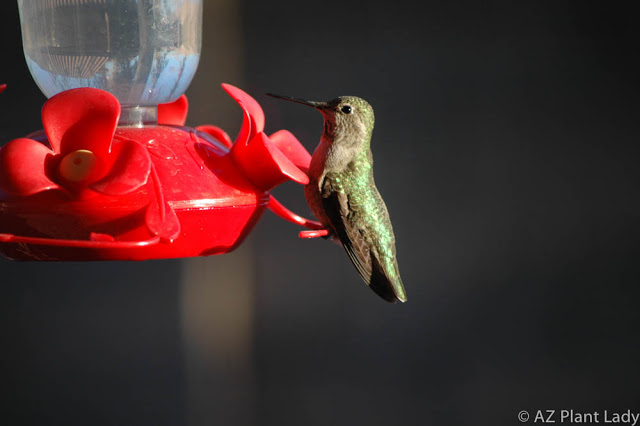
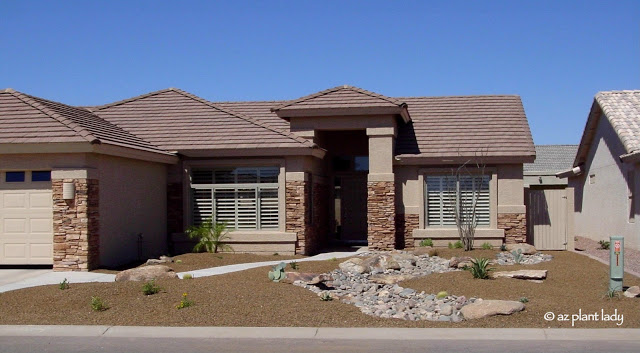
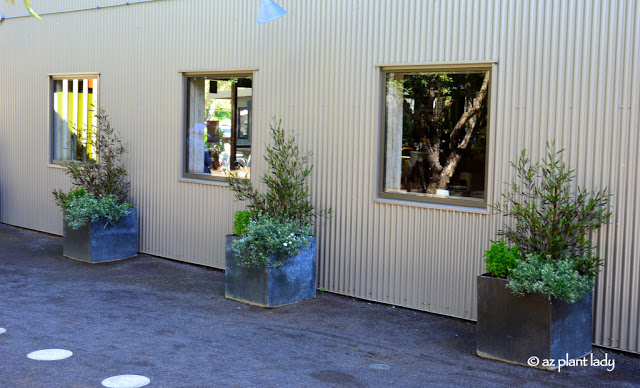
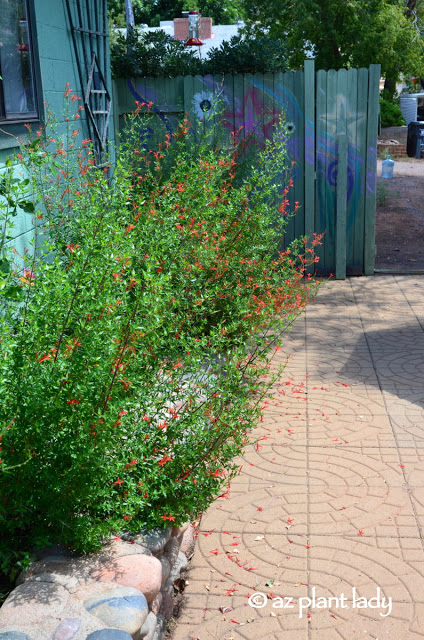
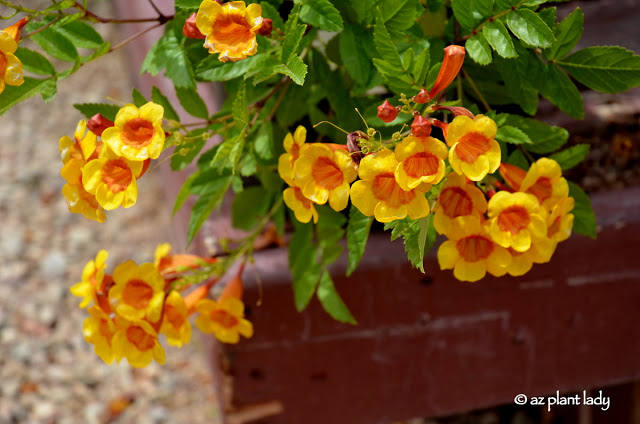








Looks like a beautiful choice!
Dear AZ Plant Lady aka Noelle Johnson
If you have a minute could you tell me what is the name of the two grasses in the photo where there is a big hop bush with the house in the background with the tile roof?
Thank you
Hello Gerald,
Those aren’t grasses, although they do resemble an ornamental grass. The plants are called desert spoon (Dasylirion wheeleri).
HI–we live in a “cookie cutter” house with a small backyard. Would the hop bush be good for a privacy hedge? How close together should they be planted?
Thanks
Hi Val,
Hop bush makes a great privacy hedge! I would recommend planting them 6-8 feet apart, which will give them room to grow.
What about Bamboo? I see it occasionally and the clumping varieties look really nice. Also seems more dense for soundproofing all those yards next to a busy roadways.
Hello Rogi,
Bamboo does grow well in the low desert, with supplemental water. However, it can become quite invasive and I don’t recommend it for that reason.
Thanks for the reply. My understanding is that there are two different kinds of bamboo. The running and cluping varieties. I understood that the latter is not invasive. Is that incorrect? I know there is a place in Tucson that sells bamboo.
Hi Rogi,
Both types need to be carefully considered when growing. It’s important they be contained to avoid any potential problems. Here is a helpful link from ASU regarding using bamboo in the landscape – http://www.public.asu.edu/~camartin/plants/Plant%20html%20files/bambusa.html
I hope this helps!
How would hop bush do when we have one of our cold snaps/freeze, would it have to be covered?
Hello Pam,
Hop Bush does just fine when we experience winter temps down into the upper 20’s. However, it they get down into the low 20’s, they do suffer frost damage.
Hi!
We planted hopbush along our back cinderblock wall for beauty and privacy. They look great but I think they were planted to close and we get strong summer winds against that wall that have kept them from growing straight. They bend down and sideways. Any suggestions for keeping them upright? I tried staking but they have so many branches. Would securing them to a trellis work? Thanks!
Hello Mary,
When hopbush are young, they are rather ‘bendy’. You can use stakes temporarily to help keep them upright. As they grow, their branches will grow wider and more stable.
I hope this helps!
Is Hopseed bush a good option for privacy between driveways? I am not worried about H or W but depth so people can still park. Would I be able to keep them pruned to about a 3′ depth dimension?
Hello Sue,
Hopseed bush is a great privacy hedge. But, it does need room to grow. The width of a shrub is also its depth as it grows equally all around. Its unpruned size can reach 8 feet in width and 10 feet tall. When pruned, it can be maintained at a lesser size, but 3 feet in width would be too small. The smallest size I would say is 4-5 feet. I hope this helps.
Hi, I am told the purple hopped bush is a great variety. Does the purple variety grow as tall and hardy? Also, if I wanted a 9 feet high, dense privacy hedge, could I plant them 2 feet apart? Thanks, Robby
Hi Robby,
It is said the purple hop bush isn’t quite as vigorous as the green variety, but they do very well for what you are describing. Because they grow approximately 6-8 feet wide, spacing them out two-feet apart is too close and they will have difficulty growing. I would space them 4-5 feet apart for a dense hedge.
Hello,
We had several large concrete planters made in which we planted hopseed about 2 years ago. Goal was to create a privacy hedge. They’ve grown well, but aren’t as full and bushy as we’d hoped. Can you advise on any fixes to thicken the foliage? Hopseed currently are about 7 feet tall, in 8 planters that are about 3.5 feet wide, 3 feet tall and 1 foot deep. Patio is south facing. Thanks in advance.
Hello Diane,
The planter size sounds great. I’ve found that periodic pruning stimulates lush growth with the hop bush. I would recommend pruning them back by approximately 1/2 their size in spring. This should create a lovely flush of growth, helping to create a more lush growth habit. Because they are in a container, they won’t grow as big or lush as those grown in the ground as their root space is limited. I hope this helps!
Mono-cultures lead to all sorts of problems. We are in a borderline hardy zone for Oleanders, like how they look but am not interested in babying them. Nice to see alternatives.
Hello Janet,
They certainly do. It’s so nice to have a great alternative!
It is also popping up in Peoria (I didn’t even know that I had Oleanders until I read this article…they are everywhere). I will be removing mine and planting hop bushes. They look much fuller and prettier than Oleanders.
Hi Chris,
I like them better too! It’s sad that oleander leaf scorch is spreading though.